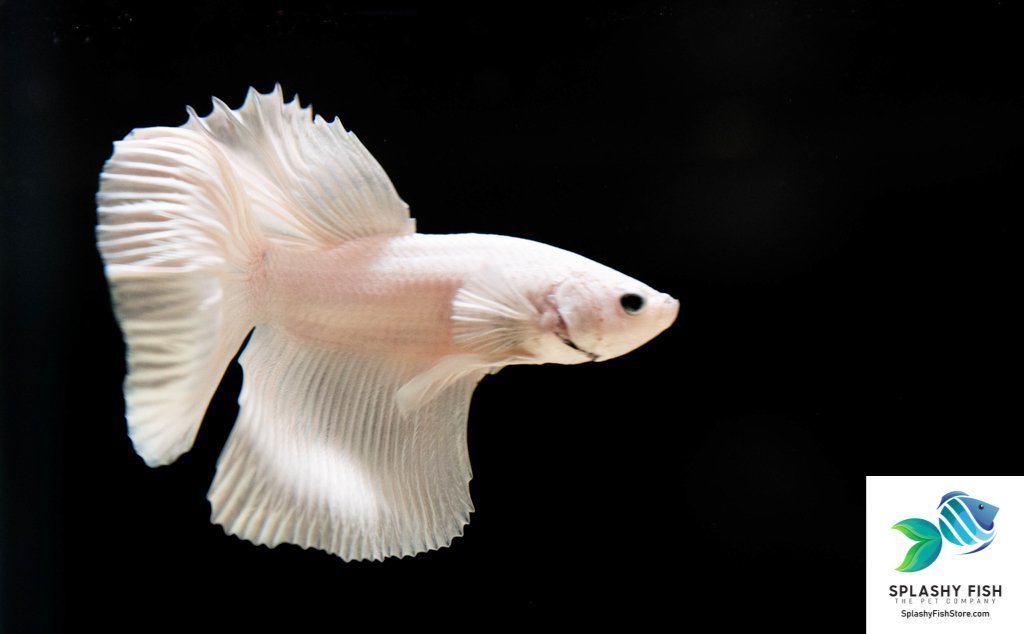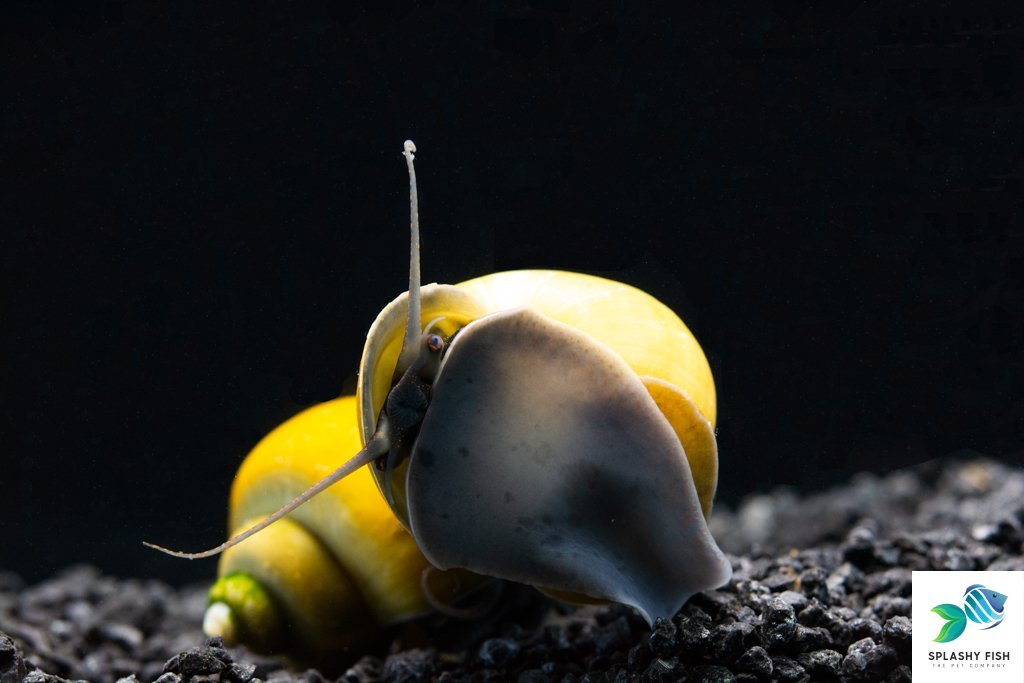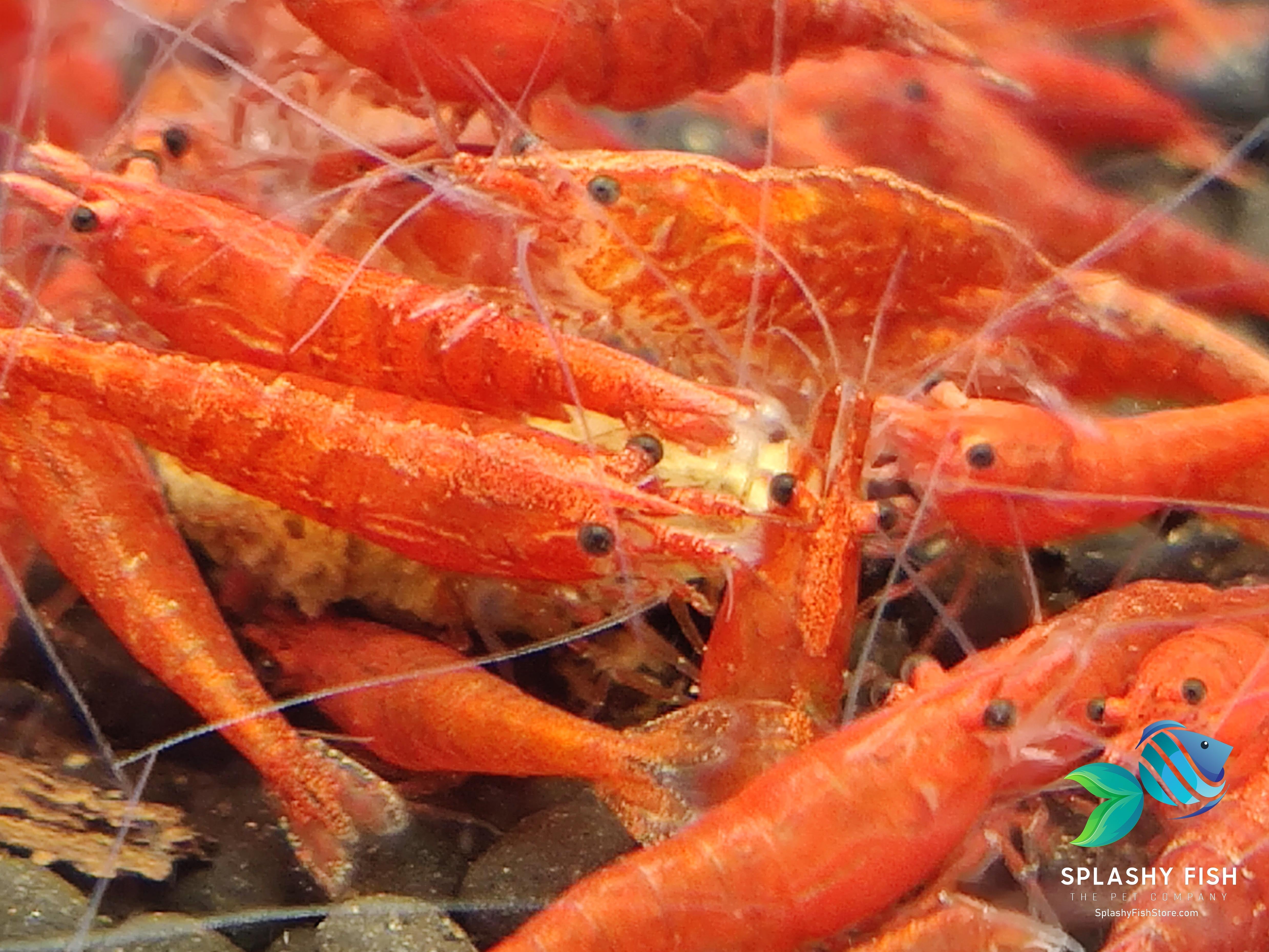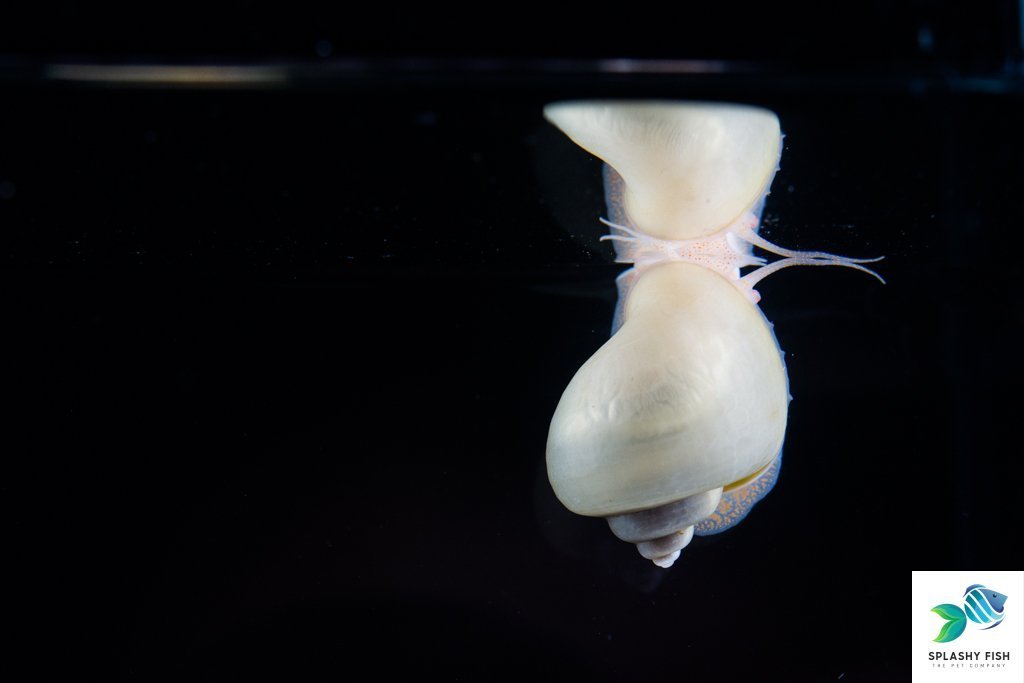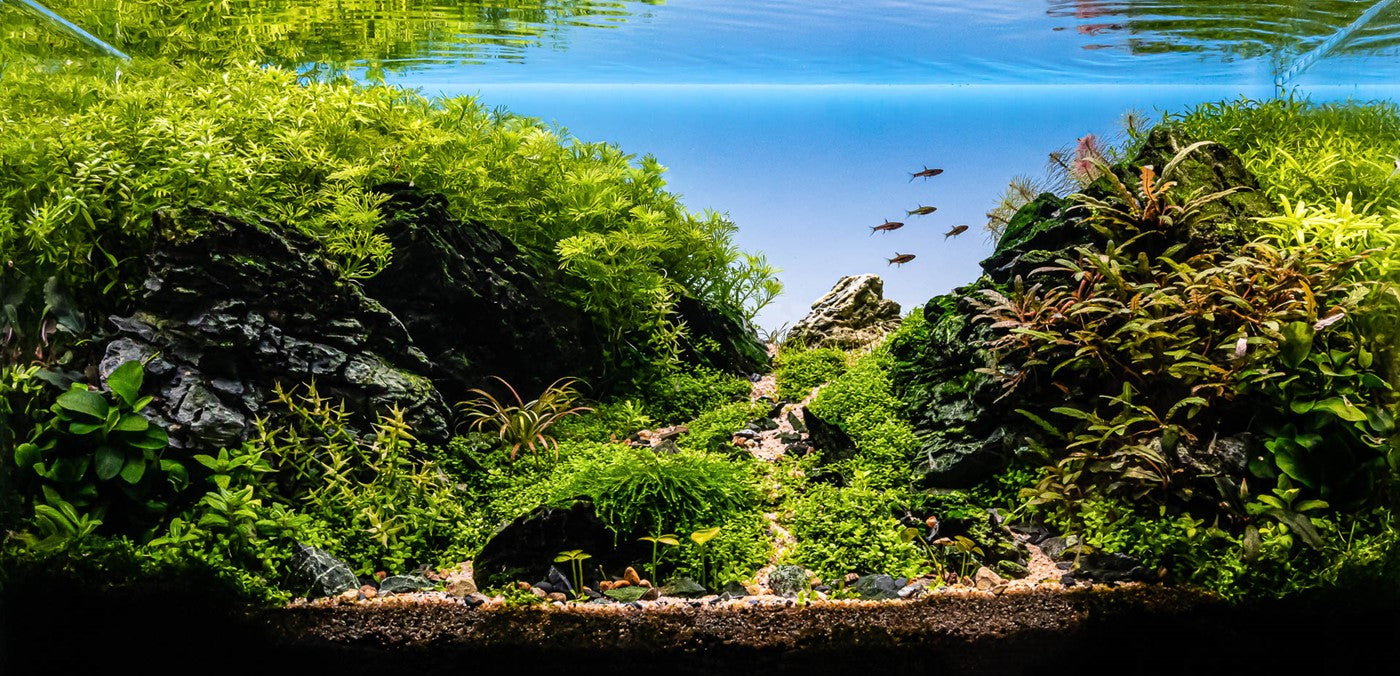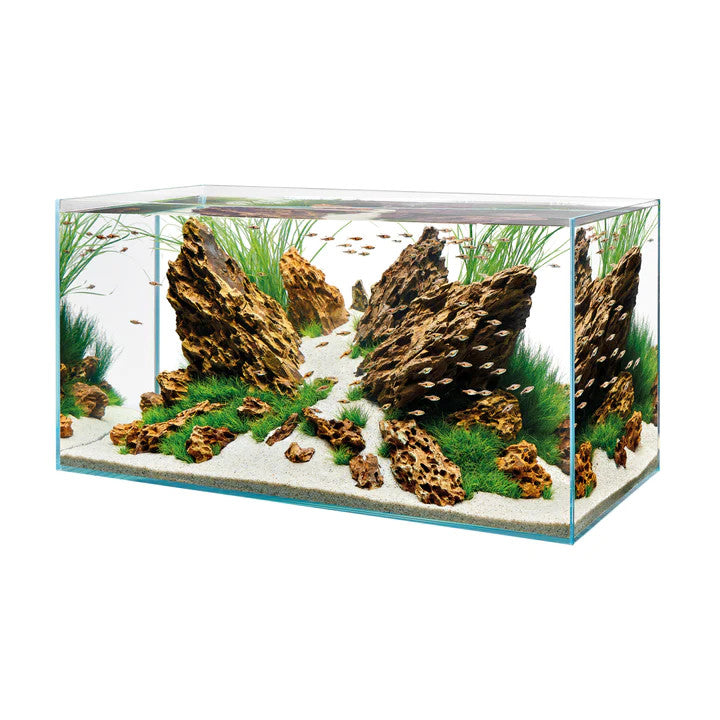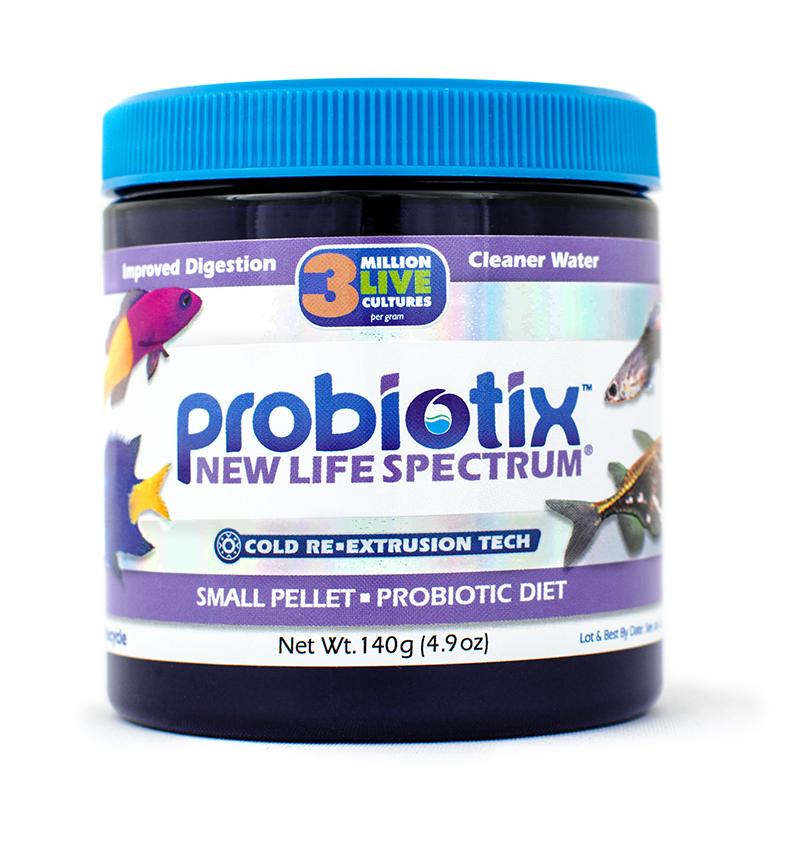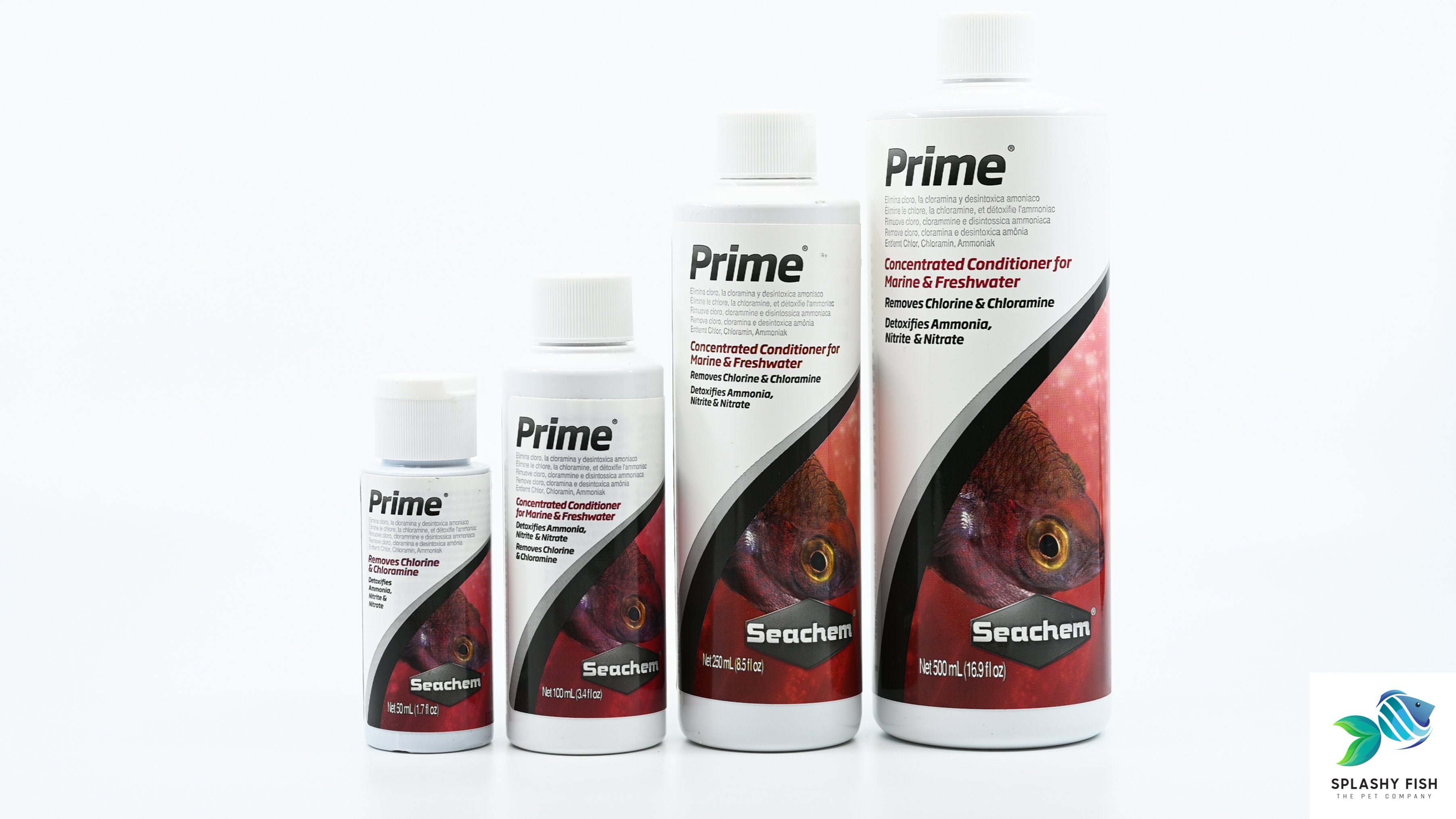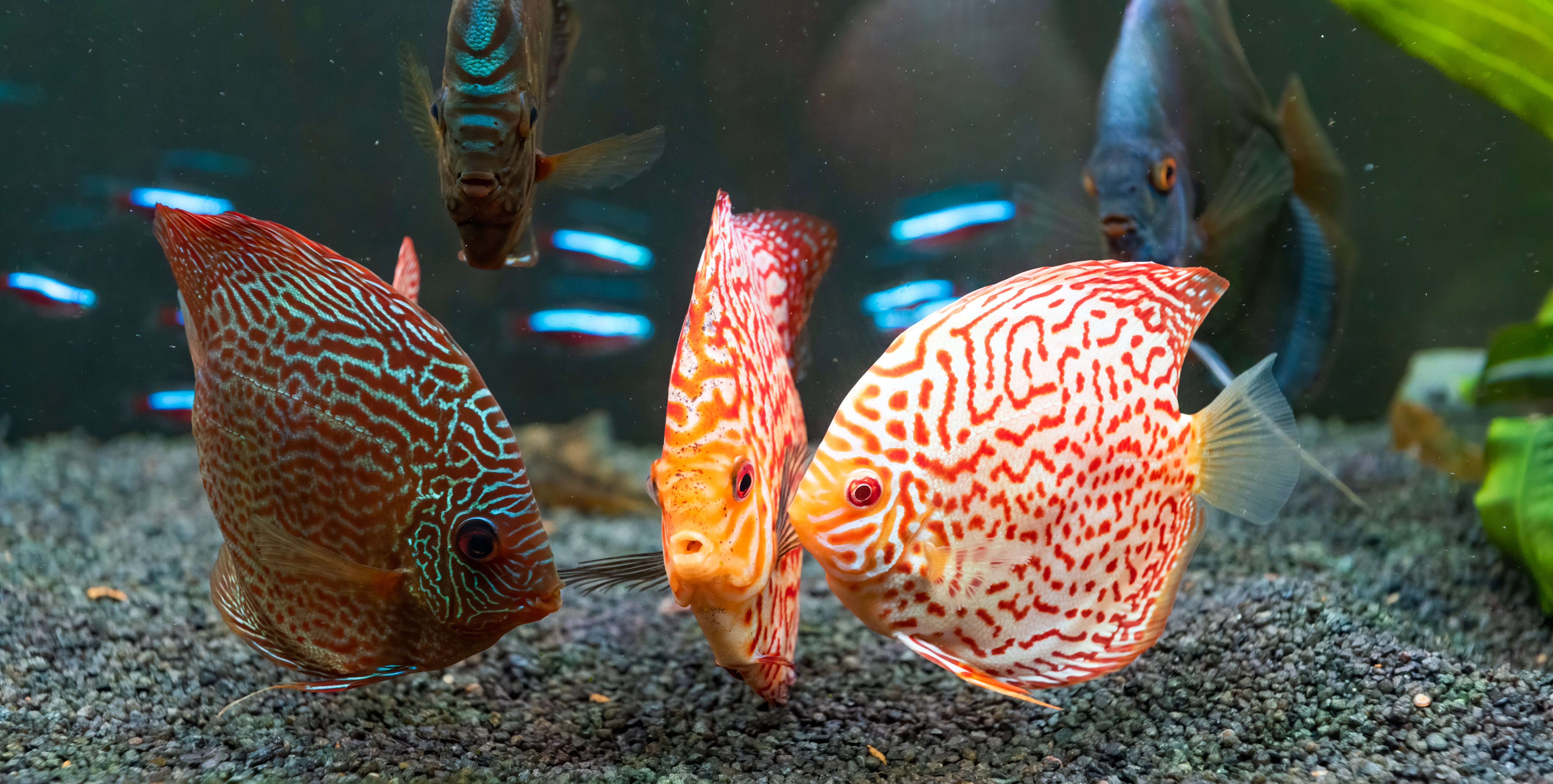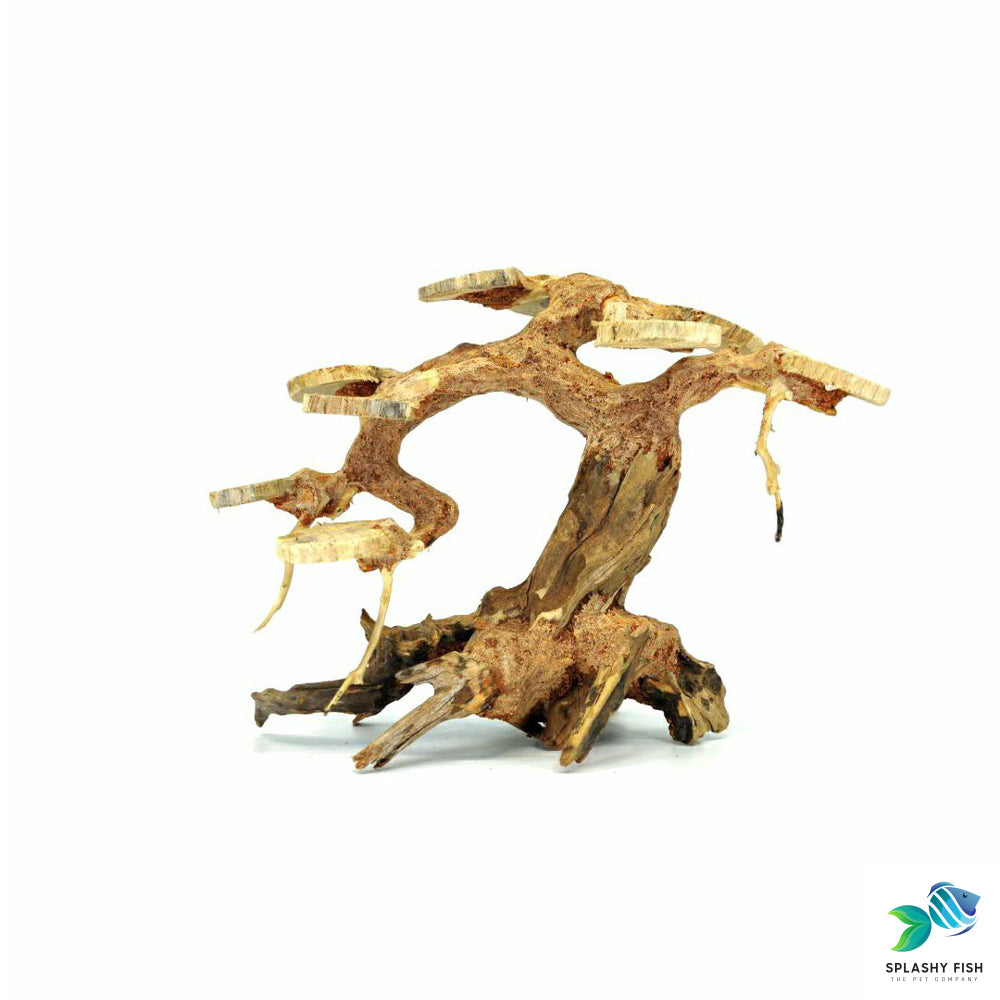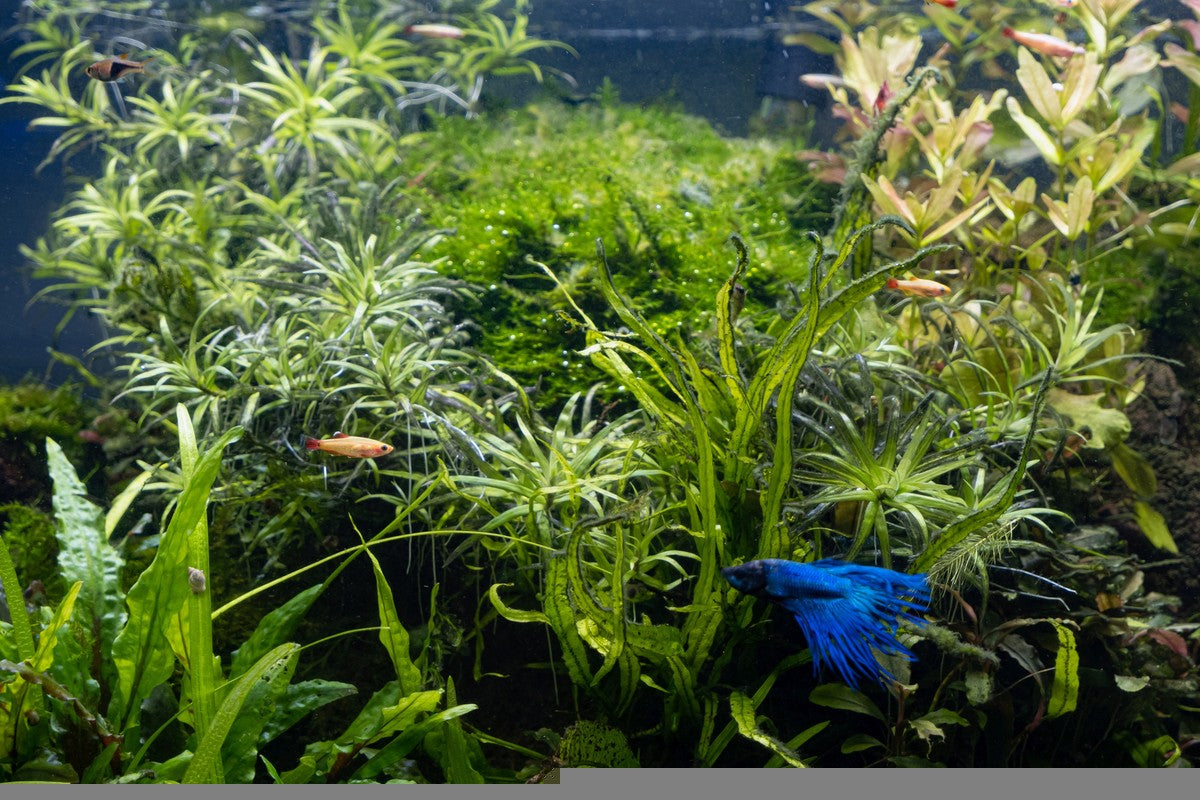CARE GUIDE FOR YOUR FERN PLANTS
Let us give you three reasons why your freshwater tank should have Fern aquatic plants: unique waving-edged foliage, low-maintenance, and great displays in the mid-ground to background of the aquarium.

(Image of Java Fern)
Fern aquatic plants are not unusual to the aquarium community. We bet many of you may have once searched for Java Fern, Java Fern Trident, or Bolbitis for the mid-ground or background positions of your tanks. Speaking truthfully, the three mentioned are also the typical and most sought fern species in the aquarium fern plant market. Yet, they are not your only choices. Having been introduced to the hobby a long time ago, fern aquatic plants are indeed diversified and have been attracting many aquarists by the variety in their color and appearance.
1.What is a fern aquatic plant?
Fern aquatic plant refers to the two main genera of fern available in the hobby that are Microsorum (commonly referred to as Java Fern) and Bolbitis. What makes the species so attractive is primarily the various green hues and its feather-like leaf shape. Such features make both Microsorum and Bolbitis popular and also always in high demand for anyone looking for fascinating aquascape ideas.
Microsorum and Bolbitis both originated from tropical areas. While the former, Microsorum, is the representative of Asian regions, Bolbitis is the water fern native to wet areas of Africa, thus sometimes known by the name of ‘African fern’ or ‘Congo water fern’.
Microsorum and Bolbitis both originated from tropical areas. While the former, Microsorum, is the representative of Asian regions, Bolbitis is the water fern native to wet areas of Africa, thus sometimes known by the name of ‘African fern’ or ‘Congo water fern’.

(Image of Bolbitis heudelotii)
The interesting part of aquarium fern plants is that they are barely found anchoring themselves on the ground. Rather, they grow on a surface like rocks or wood. It could be a little bit hard for you to imagine its establishment process in the submersed form. However, if you observe the emersed fern plants, you may find their roots are, on most occasions, attached firmly on rock or wood surfaces. This fortunately allows the introduction of fern aquatic plants into freshwater tanks straightforwardly, by using simple tools such as aquarium specialized glue or fishing threads.
2. What does the aquarium fern plant look like?
It is hard to have a specific yet accurate answer for this question. Apart from the waving-edged leaf, aquarium freshwater fern plants may look slightly different subject to the variants being mentioned. Between Microsorum and Bolbitis, the former has more variants than the latter.
Common Fern aquatic plants
Common Fern aquatic plants
- Java Fern (Microsorum pteropus): A classic of all the classic fern plants. Java fern is the favorite of many aquarium plant hobbyists not only because of low-maintenance but also resilience and undemanding in terms of care. Further, its unique leaf structure which tends to be pointed toward the top and tough turns out to be suitable to co-exist with a huge variety of fish, even the herbivores. With the average height of 13.5 inches and width of 6-8 inches, Java Fern easily forms a jungle view for your aquarium when positioned in the middle to the background of the tanks.
- Narrow-leaf Java Fern: The species possesses many similar characteristics to Java Fern, yet shorter in height and slender in terms of leaf shape. Due to this, its growth form may somehow not give the bushy effect compared to that of Java Fern.
- Windelov Java Fern (Microsorum pteropus var. Windelov): Also called Lace Java Fern due to its exotic-looking with finely branched leaves. Windelov Java Fern is known for its great growth under low lighting conditions and in various ranges of water parameters.
- Trident Java Fern (Microsorum pteropus var. Trident): The fascinating variant is distinctive for its narrow feathery leaves that surely gives a highlight for your freshwater aquarium. Despite being shorter than narrow-leaf fern, its growth rate seems to be superior over other Microsorum.
- Needle Leaf Java Fern: Like the name, this fern plant resembles a needle which often sways gracefully along the water currents. It is also rare and smaller than other ferns mentioned above.

(Image of Trident Java Fern)
For Bolbitis, it could be said that the widely known and available in the aquarium market are Bolbitis Heudelotti (Bolbitis Narrowleaf) and Bolbitis Heteroclita (Bolbitis Broadleaf). Both variants display a lively green foliage, enhancing the atmosphere of fish tanks. Although Bolbitis does not have as many variants as Microsorum, it is still considered one of the most desired aquarium plants as for the beauty it brings to the tank and the less burden aquarists experience when caring for the fern species.
3. Why should I have fern aquatic plants in my tank? Benefits of aquarium fern plants
Beside the general benefits that all freshwater aquarium plants could offer to your tank, Fern aquatic plants are worth your consideration for the following reasons:
- Aquascape design: The fern allows you to freely design and create as many fantastic aquascapes as you can. Especially, when you are in need of prolific mid-ground or background aquarium plants. Fern is the freshwater species you could not disregard. Set it alone in the corner of the tank, Fern plants with their swinging foliage will give the pleasing look and calm the souls of those glancing at them. However, if the bushy effect is what you are longing for, a cluster of Java Fern could not be more perfect.
- Tank mates: We would like to discuss both aspects of fish and other live aquatic plants. If your tank keeps boisterous fishes (such as Oscar fish, Cichlids, Tetras, etc.), Microsorum should be the first aquarium plants you may come up with. Due to the robust nature, Microsorum could be compatible with various types of fish, including fish that are prone to damaging sensitive plants. Moreover, fern can tolerate a wide variety of water parameters hence, it becomes an ideal choice of many aquascapers who wish to create a diversified aquatic life by growing multiple live plants together.

(Image of Windelov Java Fern)
4. How to grow Fern plants in home aquariums?
Planting fern plants actually has more than one conventional way. It is up to the aquascape you wish to create that either attaching the plant to hardscapes or leaving it floating or burying into the soil are all acceptable.
Method 1: Most aquarists prefer anchoring the ferns to hard surfaces by using specialized glue or fishing lines. For hard surfaces, you could consider rock, wood, or driftwood. The procedure is quite simple. First, you have to identify their rhizomes and roots. Then, hold the ferns firmly to the hardscapes while using fishing lines/ threads to tie the plants’ rhizomes in place. If you use glue, run a thin bead of glue gel to the hard surface, and press the aquarium ferns’ rhizome to it; hold for another 30 seconds and you are done. Your plants need time to let their roots establish and self-attach to the rock or wood; and the process won’t be completed just for a day or two. Therefore, you have to be patient and regularly observe the ferns. Once you notice the roots likely hold firmly on the hardscape, you then cut and remove the fishing lines/ thread so it would not impede the growth of your plants.

(Image of Needle Leaf Fern planted with glue or fishing lines)
Method 2: After you finish the preparation steps, you then introduce your fern aquatic plants to the aquarium. Simply let it slowly submerge without doing anything else, the plants soon either float freely or attach to something in the tank on its own.
Method 3: If you go with the burying process, there is only one thing you need to be cautious about: never let the rhizome beneath the substrates. Or else, fern plants will rot and eventually die. In fact, we do not really encourage such way of planting. As once you make mistakes, it is hard to remedy. Further, if the roots of your ferns are short and thin, ‘burying’ method may not help the plants stay upright.
Method 1: Most aquarists prefer anchoring the ferns to hard surfaces by using specialized glue or fishing lines. For hard surfaces, you could consider rock, wood, or driftwood. The procedure is quite simple. First, you have to identify their rhizomes and roots. Then, hold the ferns firmly to the hardscapes while using fishing lines/ threads to tie the plants’ rhizomes in place. If you use glue, run a thin bead of glue gel to the hard surface, and press the aquarium ferns’ rhizome to it; hold for another 30 seconds and you are done. Your plants need time to let their roots establish and self-attach to the rock or wood; and the process won’t be completed just for a day or two. Therefore, you have to be patient and regularly observe the ferns. Once you notice the roots likely hold firmly on the hardscape, you then cut and remove the fishing lines/ thread so it would not impede the growth of your plants.

(Image of Needle Leaf Fern planted with glue or fishing lines)
Method 2: After you finish the preparation steps, you then introduce your fern aquatic plants to the aquarium. Simply let it slowly submerge without doing anything else, the plants soon either float freely or attach to something in the tank on its own.
Method 3: If you go with the burying process, there is only one thing you need to be cautious about: never let the rhizome beneath the substrates. Or else, fern plants will rot and eventually die. In fact, we do not really encourage such way of planting. As once you make mistakes, it is hard to remedy. Further, if the roots of your ferns are short and thin, ‘burying’ method may not help the plants stay upright.
Where do I position my aquarium fern plants? Normally, both genres grow to around 13-15 inches, appropriate to the mid-ground to the background positions of the tank. If you opt for placing them in the front, the ferns may obscure the view of fish or other small plants, or decorations.
5. How to care for fern plants?
Most fern aquatic plants are undemanding in terms of care. They are further known for their excellent resilience to various water parameters as long as you keep these parameters stable. Given its low-maintenance and nearly having no requirement of substrate, aquarium freshwater fern plants could relieve you from the burden of paying too much attention to setting up a proper tank.
A fern plant, considering the size, normally would like to inhabit a minimum tank size of 10 gallons. Since the plant can be established without the hand of substrate, some aquarists even challenge themselves by using bare-bottom tanks to cultivate aquarium ferns. However, if your intention is to create a diversified aquatic ecosystem, which requires a substrate to nurture other freshwater plants, you may have a second thought. However, in no case you should use sharp gravels or rocks. Because such types of substrates easily damage fern’s rhizomes.
Aquatic ferns are tropical species, and they surely demand for the similar temperature in home aquarium to thrive. Generally, they will be pleased with the warmth ranges of between 68° to 80°F (20° - 26°C) with as little fluctuation as possible. In addition, water parameters should be well adjusted to slightly acidic levels (6-7) with hardness of around 3-8. Lighting is not a big concern to the plants as it can survive under a variety of lighting conditions (though ferns prefer the low and shady modes). The same is applied to CO2 additives. Aquatic fern plants do not ask for a lot of extra CO2. However, if you choose not to supplement CO2 frequently, remember to maintain good gentle flows of water as it does help circulate already existed CO2 and benefit the growth stages of fern plants.
Last but not least in the caring steps of ferns is nutrients. Aquarium ferns rely on good sources of nutrients. Since it mostly absorbs nutrients through its leaves, liquid fertilizer appears to be a good option for the plants. Fern is notorious for its slow growth rate hence, keep ‘feeding’ the plants with an appropriate amount of nutrients could somehow boost its development.
A fern plant, considering the size, normally would like to inhabit a minimum tank size of 10 gallons. Since the plant can be established without the hand of substrate, some aquarists even challenge themselves by using bare-bottom tanks to cultivate aquarium ferns. However, if your intention is to create a diversified aquatic ecosystem, which requires a substrate to nurture other freshwater plants, you may have a second thought. However, in no case you should use sharp gravels or rocks. Because such types of substrates easily damage fern’s rhizomes.
Aquatic ferns are tropical species, and they surely demand for the similar temperature in home aquarium to thrive. Generally, they will be pleased with the warmth ranges of between 68° to 80°F (20° - 26°C) with as little fluctuation as possible. In addition, water parameters should be well adjusted to slightly acidic levels (6-7) with hardness of around 3-8. Lighting is not a big concern to the plants as it can survive under a variety of lighting conditions (though ferns prefer the low and shady modes). The same is applied to CO2 additives. Aquatic fern plants do not ask for a lot of extra CO2. However, if you choose not to supplement CO2 frequently, remember to maintain good gentle flows of water as it does help circulate already existed CO2 and benefit the growth stages of fern plants.
Last but not least in the caring steps of ferns is nutrients. Aquarium ferns rely on good sources of nutrients. Since it mostly absorbs nutrients through its leaves, liquid fertilizer appears to be a good option for the plants. Fern is notorious for its slow growth rate hence, keep ‘feeding’ the plants with an appropriate amount of nutrients could somehow boost its development.
Trimming: Aquatic ferns do not require trimming very often. Nonetheless, if the plants grow too large or affect the growth of other plants, you could prune the unnecessary leaves. As the process requires lowering the tank water levels, you can do this when performing water changes. Use a sharp pair of scissors and gently cut off the leaves you want to remove to manage the ferns' growth.
With some minor tips, we hope you find them useful during your pursuit of the aquarium hobby. Splashy Fish Store believes aquascapes should bring joy rather than concern. We will be pleased if this article will help you realize it.
At Splashy Fish Store, we supply a wide range of aquarium freshwater ferns which come from reliable sources. We further guarantee that all of our fern plants will go through the quarantine process for a period of 14-day before sale. We care about the quality and strive to provide you the best we can. Visit our store to find what surprise is waiting for you.


